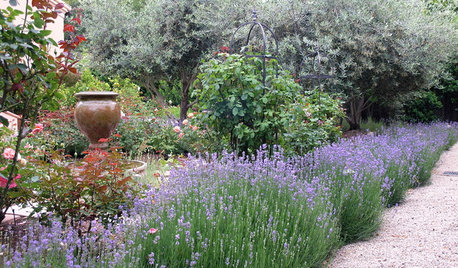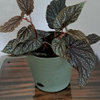Is it terribly difficult to grow begonias from seed?
flora2
10 years ago
Related Stories

LIFEPortrait of a Terrible Housekeeper
Even in hair-raising tales and harebrained organizing schemes, there's something we can learn
Full Story
GARDENING GUIDES7 New Plants to Grow for Beautiful Foliage
Add color, structure and interest to your garden with these recently introduced plants that sport exceptional foliage
Full Story
SPRING GARDENINGSummer Crops: How to Grow Strawberries
Pluck your own sweet strawberries right from the garden vine for smoothies, salads or eating then and there
Full Story
EDIBLE GARDENSHow to Grow Your Own Sweet Summer Crops
This guide will help any gardener get started on growing the freshest warm-season veggies and berries for summer
Full Story
FLOWERSHerb Garden Essentials: Grow Your Own Fragrant Lavender
This do-it-all plant is ideal for almost any garden, and its uses are abundant around the home
Full Story
FARM YOUR YARDHow to Grow Vegetables in Containers
Get glorious vegetables and fruits on your patio with a pro’s guidance — including his personal recipe for potting mix
Full Story
HOUSEPLANTS10 Top Plants to Grow Indoors
Brighten a room and clean the air with a houseplant that cascades artfully, stretches toward the ceiling or looks great on a wall
Full Story
EDIBLE GARDENSSummer Crops: How to Grow Tomatoes
Plant tomato seedlings in spring for one of the best tastes of summer, fresh from your backyard
Full Story
FRUIT TREESHow to Grow Your Own Juicy Plums
Easier than other stone fruits and with a variety of colors to choose from, plums are a versatile garden addition
Full Story
GARDENING GUIDESWhat Kind of Roses Should You Grow?
Want to add the beauty of roses to your garden? Find out which ones, from old-fashioned to modern, are right for you
Full Story






hc mcdole
hc mcdole
Related Professionals
Surprise Landscape Architects & Landscape Designers · La Marque Landscape Architects & Landscape Designers · Lowell Landscape Architects & Landscape Designers · West Chester Landscape Architects & Landscape Designers · Paradise Landscape Architects & Landscape Designers · Cockeysville Landscape Contractors · Fair Lawn Landscape Contractors · Lynchburg Landscape Contractors · Wareham Landscape Contractors · Shenandoah Landscape Contractors · Derry Siding & Exteriors · Destin Siding & Exteriors · Lawrenceville Siding & Exteriors · North Hollywood Siding & Exteriors · Wethersfield Siding & Exteriorsflora2Original Author
hc mcdole
ianbrazil
eahamel
Woebegonia